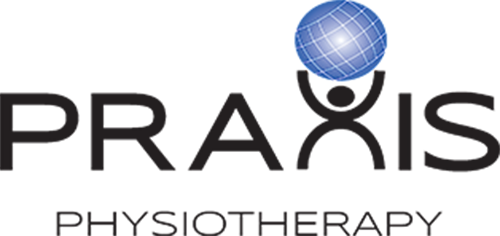Osgood-Schlatter disease (OSD) (or tibial tuberosity traction apophysitis) is a common condition that affects the knee, primarily in adolescents and young athletes. OSD is more frequently experienced in males 12-15 years old who are involved in activities that require frequent running, jumping, kicking and decelerating, like football (Bezuglov et al 2022). The condition manifests as pain, swelling, and tenderness just below the knee, where the patellar tendon attaches to the tibial tuberosity. Discomfort and potential disruption of daily activities and sports participation is often the result.
A prerequisite for this condition is high loading. The repetitive stress placed on this area during physical activities leads to microtrauma and inflammation, causing symptoms. While the condition is generally self-limiting and tends to resolve as the affected individual completes the growth spurt, physiotherapy plays a pivotal role in effectively managing symptoms, promoting healing, and aiding in a smooth return to physical activities. Various conservative approaches have been studied and recommended in the scientific literature to manage symptoms and aid in the healing process. Interestingly, the condition is strongly associated with Sever’s disease, another growth and loading related injury associated with active young people (Schultz et al 2022). Read on for a general overview of the treatment options supported by scientific research.

Rest and Activity Modification
Rest is often a key component of initial treatment. Reducing or modifying activities that aggravate symptoms, such as avoiding high-impact sports or exercises, can help alleviate strain on the affected area and promote healing. According to a study published in the “Journal of Pediatric Orthopaedics,” activity modification was found to be an effective strategy in managing Osgood-Schlatter Disease, with a significant reduction in pain reported by participants who adhered to activity restrictions.
Physical Therapy and Stretching Exercises
Physical therapy plays a vital role in managing Osgood-Schlatter Disease. A study published in the “Journal of Orthopaedic & Sports Physical Therapy” emphasized the importance of a structured physical therapy program involving stretching exercises for the quadriceps, hamstrings, and calf muscles. These exercises aim to improve muscle flexibility, reduce tension around the knee, and address any muscle imbalances that might contribute to the condition.
Strengthening Exercises
Strengthening exercises focused on the quadriceps and surrounding muscles can help improve biomechanics and stabilize the knee joint. Research published in the American Journal of Sports Medicine highlighted the positive effects of a quadriceps-strengthening program in reducing pain and improving function in individuals with Osgood-Schlatter Disease.
Ice Therapy
Cold therapy, such as applying ice to the affected area, can help reduce inflammation and provide pain relief. A study published in the “Journal of Orthopaedic & Sports Physical Therapy” suggested that ice therapy can be beneficial when used in combination with other conservative treatments.
Non-Steroidal Anti-Inflammatory Drugs (NSAIDs)
NSAIDs, such as ibuprofen, are commonly used to manage pain and inflammation associated with Osgood-Schlatter Disease. However, their use should be supervised by a healthcare professional such as your GP or pharmacist, and long-term or excessive use should be avoided.
Bracing and Taping
Some studies have explored the use of knee braces or taping techniques to offload the patellar tendon and reduce strain on the tibial tuberosity. While research on this aspect is limited, these approaches might offer temporary relief during activities. This can be trial and error as to which technique works best however compression over the tibial tuberosity seems to be the most common strategy.
Education and Activity Guidance
Educating patients and their parents about the condition, its natural history, and appropriate activity modification is crucial. A study in the “Journal of Pediatric Orthopaedics” emphasized the significance of patient education in improving adherence to treatment recommendations and facilitating symptom management.
It’s important to note that each individual’s response to treatment can vary, and a tailored approach is often necessary. In cases where conservative treatments do not provide sufficient relief, and severe pain or functional limitations persist, consultation with a Sports Physician or Orthopaedic surgeon may be warranted. Surgical intervention is rarely indicated and is typically considered only when symptoms are severe, long-lasting, and significantly affecting an individual’s quality of life.
In summary, Osgood-Schlatter Disease can pose significant challenges for adolescents and young athletes, affecting their quality of life and participation in sports. While the condition typically resolves with time and growth plate maturation, the discomfort and limitations it presents can be effectively managed and alleviated with the help of physiotherapy. If you or someone you know is dealing with this condition, get help from our friendly and qualified Praxis physios to individualise an appropriate rehabilitation plan.
Until next time, PREVENT PREPARE PERFORM
Team Praxis
References:
Bezuglov, E., Pirmakhanov, B., Ussatayeva, G., Emanov, A., Valova, Y., Kletsovskiy, A., … & Morgans, R. (2022). The mid-term effect of Osgood-Schlatter disease on knee function in young players from elite soccer academies. ThePhysicianandSportsmedicine, 1-6.
Ciatawi, K., & Dusak, I. W. S. (2022). Osgood-Schlatter disease: A review of current diagnosis and management. CurrentOrthopaedicPractice, 33(3), 294-298.
Schultz, M., Tol, J. L., Veltman, L., & Reurink, G. (2022). Osgood-Schlatter Disease in youth elite football: Minimal time-loss and no association with clinical and ultrasonographic factors. PhysicalTherapyinSport, 55, 98-

